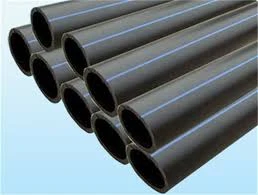dets. . 21, 2024 03:11 Back to list
ppr pipe fitting
Understanding PPR Pipe Fittings Advantages and Uses
PPR (Polypropylene Random Copolymer) pipe fittings have gained immense popularity in recent years due to their remarkable properties and applications across various industries. As a type of plastic piping, PPR is a thermoplastic polymer known for its durability, resistance to corrosion, and lightweight nature. This article delves into the characteristics, benefits, and applications of PPR pipe fittings to provide a comprehensive understanding of their significance in modern plumbing, heating, and industrial systems.
What is PPR Pipe Fitting?
PPR pipe fittings are components made from polypropylene random copolymer that are used to connect sections of PPR piping. These fittings can be molded into various shapes, including elbows, tees, connectors, and couplings, to facilitate the direction and flow of fluids in both residential and industrial settings. The versatility of these fittings allows for a range of applications, from water supply systems to chemical handling and even heating installations.
Advantages of PPR Pipe Fittings
1. Corrosion Resistance One of the standout features of PPR pipe fittings is their resistance to corrosion. Unlike metal pipes, PPR fittings do not rust or degrade when exposed to harsh chemicals, making them an ideal choice for transporting aggressive fluids.
2. Durability PPR fittings are known for their long service life. With the ability to withstand high pressures and temperatures, they can last for decades without significant maintenance issues. This durability reduces the need for frequent replacements, ultimately saving costs.
3. Lightweight Compared to traditional materials like metal, PPR is significantly lighter, which simplifies installation and transportation. The lightweight nature of PPR fittings allows for easier handling, reducing labor costs and time during installation.
4. Cost-Effective PPR fittings are generally less expensive than their metal counterparts. The lower material costs, combined with reduced labor costs due to ease of installation, make PPR an economical choice for both new constructions and retrofitting projects.
5. Hygienic Properties Polypropylene is non-toxic and does not leach harmful substances into the fluids it transports. This makes PPR fittings suitable for drinking water supply systems, ensuring that the water remains safe and clean.
ppr pipe fitting

6. Thermal Insulation PPR pipes provide excellent thermal insulation, reducing heat loss in hot water systems. This property can enhance energy efficiency in heating applications, yielding further savings on energy bills.
Applications of PPR Pipe Fittings
PPR pipe fittings find extensive use in various sectors, including
- Residential Water Supply Systems PPR fittings are commonly used in plumbing installations for cold and hot water supply, offering a reliable and hygienic solution for homeowners.
- Heating Systems In heating applications, such as underfloor heating and heating networks, PPR fittings play a crucial role in circulating warm water efficiently.
- Industrial Applications Due to their chemical resistance, PPR fittings are ideal for transporting chemicals in factories and labs, minimizing the risk of leaks and contamination.
- Agricultural Systems PPR fittings are used in irrigation systems, helping to manage water distribution effectively while resisting the corrosive effects of fertilizers and other chemicals.
Conclusion
In summary, PPR pipe fittings are an exemplary choice for modern plumbing and industrial applications due to their numerous benefits, including corrosion resistance, durability, and cost-effectiveness. Their versatility allows them to be utilized in various settings, ensuring safe and efficient fluid transportation. As industries continue to prioritize sustainability and efficiency, PPR pipe fittings are likely to become an even more prominent component of infrastructure development worldwide. With advancements in technology, the future of PPR fittings looks promising, paving the way for even broader applications in the years to come.
-
Durable PP Rigid Sheet: Lightweight, Chemical Resistant Solutions
NewsAug.21,2025
-
PVC Grey Sheet for Extraction: Chemical Resistant & Durable
NewsAug.19,2025
-
Durable PVC Pipe Fittings for Plumbing & Irrigation Needs
NewsAug.18,2025
-
HDPE Steel Belt Reinforced Spiral Corrugated Pipe | High Strength
NewsAug.17,2025
-
HDPE Pipe Fittings: Durable, Leak-Proof Solutions
NewsAug.16,2025
-
Premium CPVC Sheet: High-Temp & Chemical Resistant Solutions
NewsAug.15,2025

